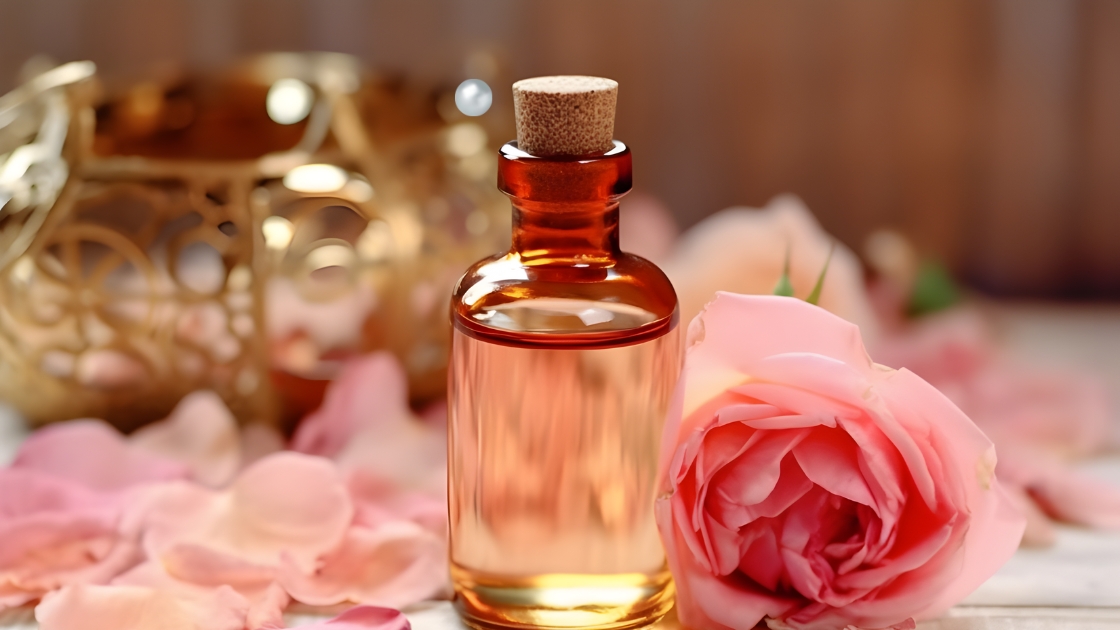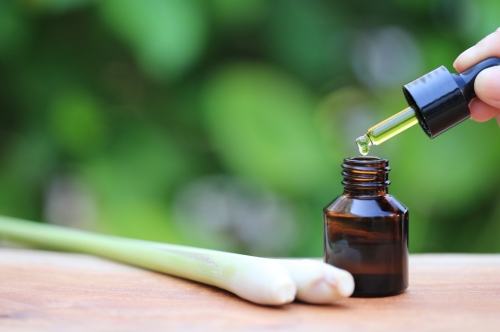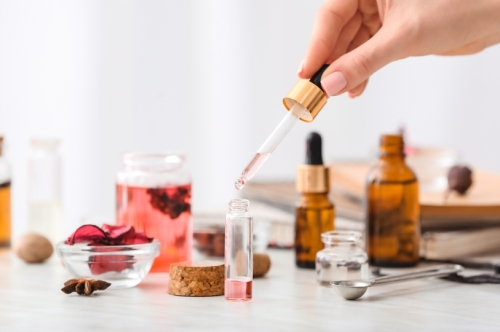What are Perfume Ingredients? Ultimate Guide to Fragrance Components

What are Perfume Ingredients? The Complete Guide to Fragrance Components
Perfume ingredients are the heart and soul of every fragrance, blending science, artistry, and nature into captivating scents that evoke memories, emotions, and even a sense of luxury. But what exactly goes into your favorite perfume? Let’s dive deep into the world of perfume ingredients, exploring their origins, extraction methods, and the role they play in the art of perfumery.
What are Perfume Ingredients?
Perfume ingredients are a diverse range of fragrant substances utilized in the art of fragrance-making. These ingredients are carefully selected and blended to create captivating and unique scents that appeal to our senses. The history of perfume dates back thousands of years, and throughout the ages, various cultures have harnessed the aromatic properties of natural materials to craft enticing perfumes.
Today, the world of perfumery is more sophisticated than ever, with perfumers—often called “noses”—using a combination of natural and synthetic ingredients to create complex, multi-layered fragrances. These ingredients can be derived from plants, animals, or created in laboratories, each bringing unique characteristics to the final scent.
Did you know? The global fragrance market was valued at over $32 billion in 2022, with natural and sustainable ingredients driving much of the recent growth.
Types of Perfume Ingredients
Essential Oils
One of the primary sources of perfume ingredients comes from plants. Essential oils are a key category among these substances. They are concentrated oils derived from plant parts such as flowers, leaves, fruits, bark, and resins, obtained through processes like steam distillation or cold pressing. Each essential oil carries the distinct fragrance of the plant it's derived from, such as lavender, rose, citrus, or sandalwood. These essential oils serve as the core building blocks of many perfumes.
If you’re interested in exploring a wide variety of pure and natural essential oils, check out Norex’s Essential Oils collection for inspiration and sourcing.
Absolutes
Another important group of perfume ingredients is absolutes. Absolutes are highly concentrated aromatic substances obtained through solvent extraction from delicate flowers like jasmine and tuberose. The solvent extraction process allows for the capture of fragrance components that might be damaged or lost during traditional distillation methods. Absolutes are prized for their intensity and are often used in high-end perfumes.
Aroma Chemicals & Synthetics
In addition to plant-based materials, perfumers also incorporate synthetic ingredients into their creations. These synthetic compounds are chemically derived and are designed to mimic the scents of natural substances or to introduce completely novel fragrance profiles. Synthetics provide perfumers with a vast array of options, allowing them to explore creative combinations and achieve scents that might be impossible to create using only natural ingredients.
For manufacturers and formulators, sourcing high-quality aroma chemicals is crucial. Discover how Norex’s aroma chemicals can enhance your fragrance formulations with consistency and innovation.
Animal-Derived Ingredients
Historically, some perfumes included animal-derived ingredients, such as musk (from deer), ambergris (from whales), and civet (from civet cats). However, in modern times, ethical and environmental concerns have led to the reduction or replacement of these animal-based materials with synthetic alternatives. Today, most luxury and mainstream perfumes use lab-created versions that replicate the scent and fixative properties of the originals.
Resins
Resins are sticky, aromatic substances exuded by certain trees and plants as a defense mechanism. They are rich in complex, long-lasting scent molecules and are often used as base notes in perfumes. Common resins include frankincense, myrrh, benzoin, labdanum, and opoponax. These ingredients add warmth, depth, and longevity to fragrances.
Extraction Methods for Perfume Ingredients
The method of extraction greatly influences the quality and scent profile of perfume ingredients. Here are the most common techniques:
- Steam Distillation: Used for extracting essential oils from flowers, leaves, and bark.
- Solvent Extraction: Ideal for delicate flowers; produces absolutes.
- CO2 Extraction: A modern, eco-friendly method that yields high-purity extracts.
- Enfleurage: An ancient technique using fats to capture fragrance from petals.
- Cold Pressing: Primarily used for citrus peels.
For a deeper dive into sustainable and innovative extraction methods, explore Norex’s expertise in fragrance and flavour manufacturing.
The Art of Blending: Perfume Notes & Fragrance Families
Perfume creation is an intricate art that involves blending various perfume ingredients to achieve a well-balanced, harmonious, and long-lasting fragrance. Perfumers, also known as "noses," have a deep understanding of these perfume ingredients' characteristics and how they interact with one another. Their expertise and creativity contribute to the captivating and diverse world of perfumery, where scents can evoke emotions, memories, and a sense of luxury.
Understanding Perfume Notes
- Top Notes: The initial, fleeting impression (e.g., citrus, herbs).
- Middle (Heart) Notes: The core of the fragrance, emerging after the top notes fade (e.g., florals, spices).
- Base Notes: The foundation, providing depth and longevity (e.g., woods, resins, musks).
Fragrance Families
Common fragrance families include:
- Floral (rose, jasmine)
- Oriental (vanilla, spices, resins)
- Woody (sandalwood, cedar)
- Citrus (lemon, bergamot)
- Aquatic (marine, ozonic notes)
Blending these notes and families is a nuanced process, requiring both scientific knowledge and artistic intuition.
Sustainability & Ethical Sourcing in Perfumery
In recent years, the fragrance industry has seen a significant shift towards sustainability and ethical sourcing. Consumers are increasingly seeking perfumes made with responsibly sourced natural ingredients and eco-friendly extraction techniques.
Norex is committed to sustainable practices, supporting local communities and minimizing environmental impact through innovative sourcing and manufacturing. Learn more about their sustainability initiatives and how they support mint farmers and biodiversity.
FAQ: People Also Ask
What are the main categories of perfume ingredients?
Perfume ingredients fall into four main categories: essential oils, absolutes, aroma chemicals (synthetics), and resins. Each plays a unique role in the scent profile and longevity of a fragrance.
How are essential oils different from absolutes?
Essential oils are typically extracted via steam distillation or cold pressing, while absolutes are obtained through solvent extraction. Absolutes are more concentrated and often used for delicate flowers.
Are synthetic ingredients safe in perfumes?
Yes, synthetic aroma chemicals are rigorously tested for safety and are widely used to replicate rare or animal-derived scents, as well as to create entirely new fragrance notes.
What is the role of resins in perfumery?
Resins act as fixatives and base notes, anchoring the fragrance and adding depth, warmth, and longevity. Examples include frankincense, myrrh, and benzoin.
How can I identify natural vs. synthetic ingredients in a perfume?
Check the ingredient list or consult the manufacturer. Many brands, like Norex, are transparent about their sourcing and formulation practices.
Expert Insights & Industry Data
- According to the International Fragrance Association (IFRA), over 3,000 ingredients are used in perfumery worldwide.
- The use of sustainable and traceable ingredients is projected to grow by 8% annually through 2027.
- Expert perfumers recommend layering fragrances with similar base notes for a personalized scent experience.
Actionable Framework: Choosing Perfume Ingredients
- Define the Fragrance Family: Decide on the overall scent profile (floral, woody, etc.).
- Select Core Ingredients: Choose essential oils, absolutes, and resins as the foundation.
- Incorporate Synthetics: Add aroma chemicals for complexity and longevity.
- Balance the Notes: Ensure a harmonious blend of top, middle, and base notes.
- Test and Refine: Evaluate the fragrance on skin and adjust proportions as needed.
Explore More with Norex
Whether you’re a fragrance enthusiast, formulator, or business, Norex offers a wide variety of natural fragrances, perfumes, flavours, and aroma chemicals at affordable prices. Discover their full product range, including food flavours and world-class multipurpose fragrances, to elevate your creations.
Conclusion
Perfume ingredients are the building blocks of every fragrance, blending tradition, science, and creativity. From essential oils and absolutes to resins and synthetics, each component plays a vital role in crafting scents that captivate and inspire. As the industry evolves, sustainability and ethical sourcing are becoming central, ensuring that the art of perfumery continues to enchant for generations to come.












